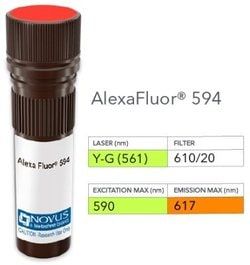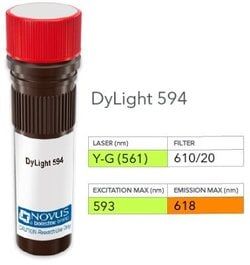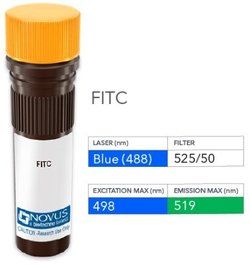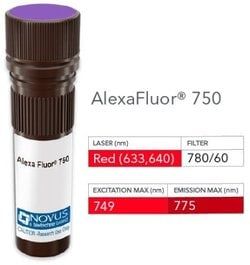Carbonic Anhydrase IX/CA9 Antibody (66.4.C2 (PN-15)), Alexa Fluor™ 750, Novus Biologicals™
Manufacturer: Novus Biologicals
Select a Size
| Pack Size | SKU | Availability | Price |
|---|---|---|---|
| Each of 1 | NB005705-Each-of-1 | In Stock | ₹ 57,494.00 |
NB005705 - Each of 1
In Stock
Quantity
1
Base Price: ₹ 57,494.00
GST (18%): ₹ 10,348.92
Total Price: ₹ 67,842.92
Antigen
Carbonic Anhydrase IX/CA9
Classification
Monoclonal
Conjugate
Alexa Fluor 750
Formulation
50mM Sodium Borate with 0.05% Sodium Azide
Gene Symbols
CA9
Immunogen
Fresh, normal human renal cortical tissue homogenate was used to generate the Carbonic Anhydrase IX/CA9 Antibody (66.4.C2 (PN-15)).
Quantity
0.1 mL
Research Discipline
Cancer, HIF Target Genes, Hypoxia, Lipid and Metabolism, Metastasis, Renal Cell Carcinoma Cell Markers
Test Specificity
Recognizes a glycoprotein of ∼200kDa, identified as carbonic anhydrase IX (CAIX/gp200). Its epitope resides in the carbohydrate domain of gp200. It shows no significant cross-reactivity with other carbohydrate determinants, such as the Lewis blood group antigens, epithelial membrane antigen, HMFG, and AB blood group antigens. In normal kidney, gp200 is localized along the brush border of the pars convoluta and pars recta segments of the proximal tubule, as well as focally along the luminal surface of Bowmans capsule adjoining the outgoing proximal tubule. Reportedly, gp200 is expressed by 93% of primary and 84% of metastatic renal cell carcinomas. This monoclonal antibody may be useful in the investigations of carcinomas of proximal nephrogenic differentiation especially those showing tubular differentiation.
Content And Storage
Store at 4°C in the dark.
Applications
ELISA, Immunohistochemistry (Paraffin)
Clone
66.4.C2 (PN-15)
Dilution
ELISA, Immunohistochemistry-Paraffin
Gene Alias
CAIX, CA-IX, Carbonate dehydratase IX, carbonic anhydrase 9, carbonic anhydrase IX, carbonic dehydratase, EC 4.2.1.1, G250, Membrane antigen MN, MN, P54/58N, PMW1, RCC-associated antigen G250, RCC-associated protein G250, Renal cell carcinoma-associated antigen G250
Host Species
Mouse
Purification Method
Protein A or G purified
Regulatory Status
RUO
Primary or Secondary
Primary
Target Species
Human, Equine
Isotype
IgG2b κ
Related Products
Description
- Carbonic Anhydrase IX/CA9 Monoclonal specifically detects Carbonic Anhydrase IX/CA9 in Human, Equine samples
- It is validated for Immunohistochemistry-Paraffin.




